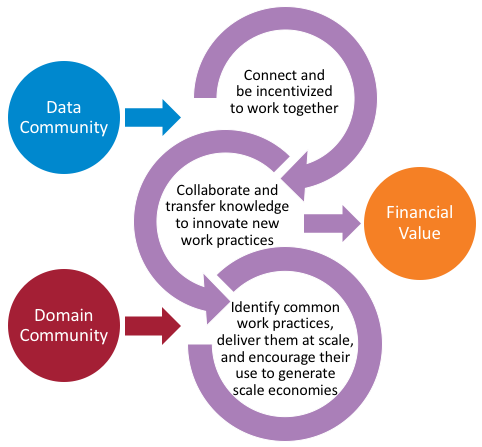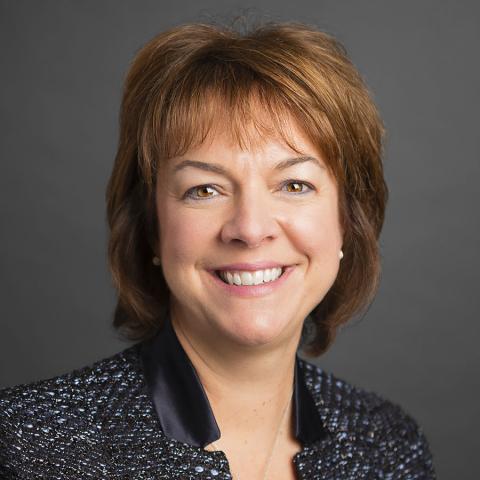Large complex companies must pursue two kinds of transformation—digital transformation and data-driven transformation—to succeed in the digital economy. In digital transformation, a company reorients its business model to deliver digitized solutions and outstanding customer experiences. In data-driven transformation, a company learns to run on analytics-powered business processes, fueled by employees who habitually use data to inform their work and by automation that draws upon data science techniques. Digital transformation establishes the company’s direction and goals; data-driven transformation guides execution.
Historically, large complex organizations have cultivated employee communities with entrenched practices to help the employees attain shared goals in similar ways. Although communities interact, they are each distinguishable by shared interests, activities, and skillsets. Communities that are data-oriented, i.e., “data communities,” are composed of employees with rich data-related skills, such as data manipulation and computational analysis. These employees share a passion for solving problems using evidence-based approaches.[foot]For an example data skill portfolio, see Wixom et al., “The Current State of Business Intelligence in Academia: The Arrival of Big Data,” Communications of the Association for Information Systems, 34 (2014).[/foot] “Domain communities” are composed of employees who share business-oriented goals for a defined domain (e.g., North American sales, consumer marketing.)
To achieve data-driven transformation, a company must establish data communities[foot]MIT CISR identified five ways that companies establish data communities: 1) local data communities grow organically; 2) a strong local data community is elevated to the enterprise level; 3) an enterprise-level data community is assembled from local community best practices; 4) an enterprise-level data community is grown organically; and 5) an enterprise-level data community is established through acquisition.[/foot] and then link them with its domain communities to create new and/or shared evidence-based work practices. Current MIT CISR research[foot]MIT CISR researchers conducted twenty-six interviews with Microsoft executives in Q1–Q3 2016. The researchers used a grounded theory approach to analyzing the interview data, and they drew upon dozens of Microsoft-provided and publicly available articles, documents, and other artifacts to triangulate their analyses.[/foot] has identified five common connecting structures that companies use to erase barriers between data and domain communities (see figure 1): (1) services, (2) advisory, (3) embedded, (4) multidisciplinary, and (5) networked. Services and networked structures promote shared behaviors and focus on maximizing scale economies. Multidisciplinary and embedded structures unify disparate teams to enable innovative behaviors. Advisory structures influence both innovation and efficiencies. Each type of connection is formed using reporting structures, workflows, or social ties.
As described in a recent MIT CISR case study,[foot]I.A. Someh and B.H. Wixom, “Microsoft Turns to Data to Drive Business Success,” MIT Sloan CISR Working Paper No. 419, July 2017, https://cisr.mit.edu/







